HOW TO FIND THE PERFECT SLEEPING BAG
Sleep under the open sky and see the stars in the evening! The perfect sleeping bag keeps you warm – whether you’re trekking in Norway or traveling the world in the Himalayas. Each destination and climate zone has different requirements for the choice of a sleeping bag – our sleeping bag advice allows you to find the best sleeping bag for your outdoor experience.
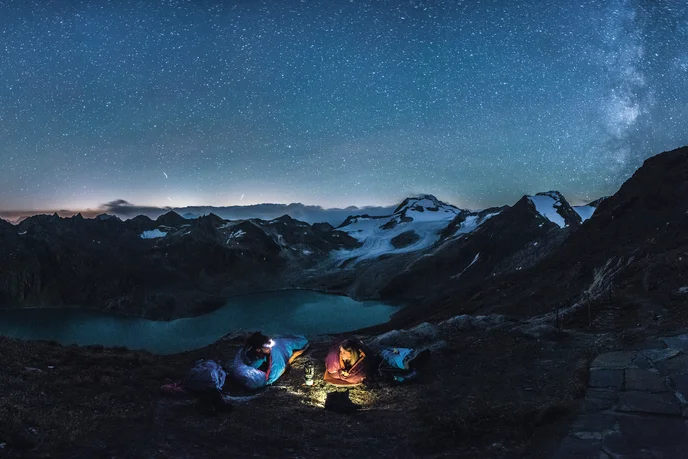
WHICH SLEEPING BAG IS THE RIGHT ONE FOR ME?
Our advice for sleeping bags is designed to answer any questions you may have:
- What will you use your sleeping bag for? These four aspects determine your choice of a sleeping bag.
- Synthetic fiber or down sleeping bag? Both these sleeping bag materials have their pros and cons.
- Which sleeping bags are available? At deuter you choose the sleeping bag by material, by purpose or body size.
- What temperatures should your sleeping bag withstand? deuter includes the relevant data in the sleeping bags; however, how warm your sleeping bag should keep you also depends on your own physical constitution.
- Once you have bought your sleeping bag: Tips for a relaxing night’s sleep
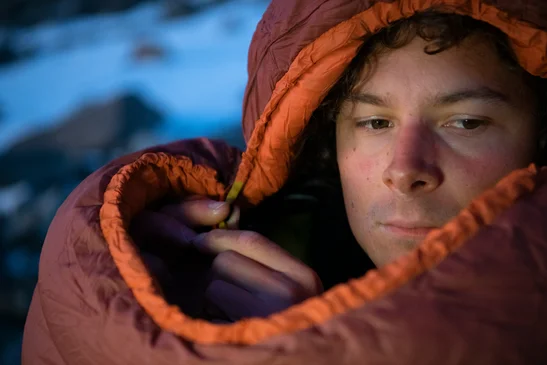
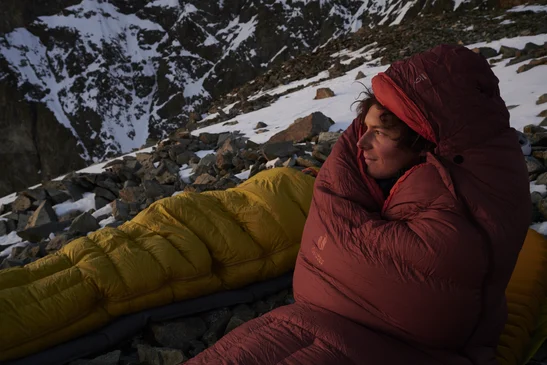
It’s actually quite easy to find the right sleeping bag if you know what you want to use it for. With the help of the following questions you can find out whether you should rather choose a sleeping bag with down or one made of synthetic fibers.
- Climate: Do you often travel in areas with a lot of rain? Or mostly from hut to hut? What is the climate like in your destination?
- Activity: How do you travel? Do you carry the sleeping bag around with you or stay put?
- Space requirements: Wide blanket or cozy mummy shape? The right size is often crucial. The tighter the sleeping bag, the faster it warms up the cold air inside. However, it should also not be too tight.
- Stress: The more frequent the change of location, the higher the mechanical stress when unpacking and stuffing.
WHICH SLEEPING BAG FOR WHICH PURPOSE
DOWN: LIGHTWEIGHT AND COMPACT – SLEEPING BAGS FOR:
- Mountain climbing
- Trekking in areas with low to normal
- Bike tours with light luggage
When you are looking for very good insulation qualities at the lowest possible weight and pack size, a down sleeping bag is the best option, because there is no synthetic fibre that can achieve the same bulking ability as this natural product, which is able to capture warm air perfectly.
When cared for correctly, down is also more durable than synthetic fibre. It also provides a pleasantly dry climate for sleeping. This is based on its capacity to absorb and release moisture. However, its moisture absorption is limited. In the case of extremely high humidity, continuous rain or proximity to bodies of water, down can clump, which reduces its insulating effect. Once the down is wet, it takes a very long time to dry out.
This is a disadvantage on multi-day winter tours. The body’s moisture condenses in the filling, freezes there, and is unable to dry off. Even in a bivouac bag, a part of the sleeping bag will freeze. A waterproof sleeping bag liner helps the down, but reduces the sleep comfort typically enjoyed with down products.
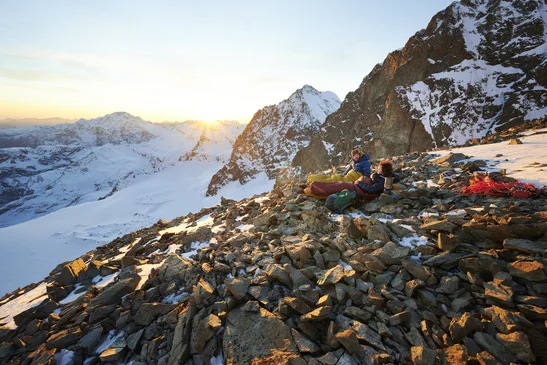
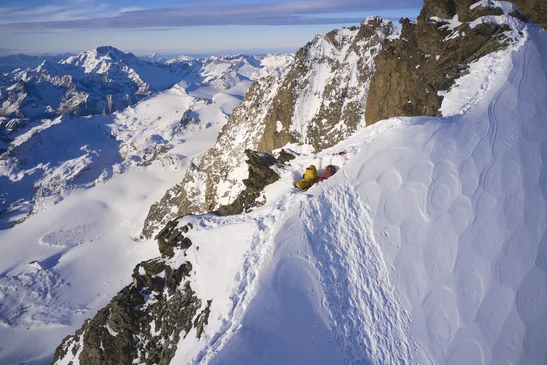
SYNTHETIC FIBRE: RESISTANT ALL-ROUNDER – SLEEPING BAGS FOR:
- All typical sleeping bag uses, especially as a summer sleeping bag
- Canoe tours
- Winter tours
- Wilderness in Scandinavia
- Bike tours with light luggage
- Hut tours
Their disadvantage is also their greatest advantage: They hardly absorb any moisture and dry much faster than down sleeping bags. If they happen to become damp, they still keep you pleasantly warm. The hollow polyester fibres continue to store warm air, since they remain stable and don’t clump like damp down does. Also ideal for use in areas with permanently high humidity. If extremely low temperatures are not expected, or the sleeping bag is heavily used and requires regular washing (children!), synthetic sleeping bags are the right choice. Ultimately, they are less expensive than down models and easier to care for.
